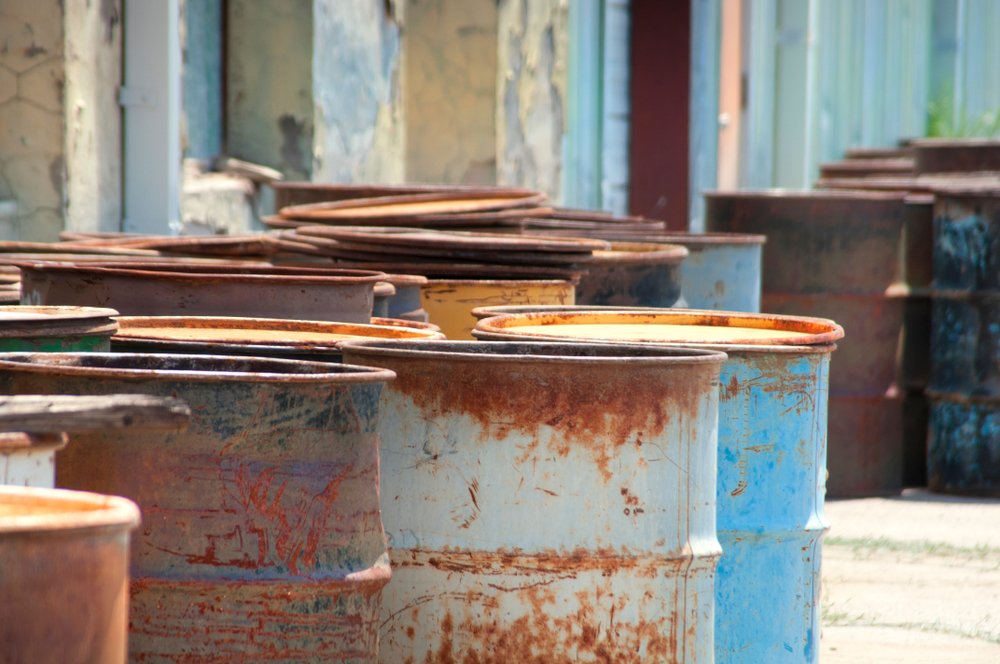In our latest installment of Ask the Expert, brought to you by the team of industry experts at EHS Hero®, we look at a recent question from a subscriber asking about the disposal process for waste paint-related materials. See what the experts had to say.
Q: If my waste disposal destination processes waste paint-related material (liquid) and waste paint-related material (solids) differently, is my facility allowed to have separated containers for each at a satellite accumulation area where they are generated?
Yes, you can accumulate more than one type of waste at a satellite storage area (SAA) and each type can be in separate containers. You must remember, however, that the accumulation limit at each SAA is 55 gallons (gal) of nonacute hazardous waste and/or either 1 quart (qt) of liquid acute hazardous waste or 1 kg (2.2lb) of solid acute hazardous waste in containers, total. Although it’s more likely that your paint waste is nonacute hazardous waste and therefore subject to the 55-gal limit, note that if both your liquid and solid paint wastes are acute hazardous waste, you are limited to a total of 1 qt or 1 kg of this acute hazardous waste at an SAA location. Since 1 qt is the volumetric equivalent of 1 kg of acute hazardous waste, it might be permissible for you to accumulate up to ½ qt and up to ½ kg of acute hazardous waste at an SAA. If that is the case, it would be advisable to confirm that with your state environmental agency.
The U.S. EPA does not have interpretive guidance on the SAA regulation at 40 CFR 262.15, but several states that follow the federal SAA rule, do. Here are examples from two states regarding the number of containers that are allowed at an SAA. Although both were written prior to the recent regulatory addition of SAA acute hazardous waste being measured in kilograms in addition to quarts, this guidance is relevant in explaining the number of containers that may be used in an SAA.
The Colorado Department of Public Health and the Environment said in an interpretive guidance document on the issue of quantity limits at an SAA: “The 55-gallon/1-quart limit applies to the total amount of waste in a satellite accumulation area, not per waste stream or waste type. A facility may accumulate waste in several small containers adding up to the 55-gallon/1-quart limit. Each satellite area may be used to accumulate not over 55 gallons of hazardous waste or 1 quart of acutely hazardous waste; however, a generator may elect to place more than one satellite area in the same location. This may be done as long as the areas are managed independently, and all satellite accumulation requirements are followed.” By “location” the CDPHE means “facility.”
The Ohio Environmental Protection Agency has described a scenario that was not an example of satellite accumulation: “A company was generating two different waste streams from the same production process. It was accumulating the waste in two 55-gallon drums placed side by side and felt that the drums would constitute two separate satellite accumulation requirement areas. They were not dating the drums until the drums were full. This scenario was determined to be a 90-day accumulation area. The 55-gallon limit for a satellite accumulation area applies to the area itself, and not to each individual waste stream accumulated in the area. Two waste streams may be stored in one satellite accumulation area in different containers as long as drums are dated when the total quantity of waste exceeds 55 gallons and the waste in excess of 55 gallons is removed within 3 days of that date. In order to establish two satellite accumulation areas, the company proposed to move one of the drums a few feet away. These were not two satellite accumulation areas because the only reason to separate the drums was to avoid the 90-day accumulation area standards, and the waste streams were generated at the same point of generation. If waste is generated at two distinct points in a process line, a company may be able to operate two satellite areas along one process line. No specific distance is defined, and it will be left to the inspector’s best professional judgment as to whether there are two distinct points of generation.”

